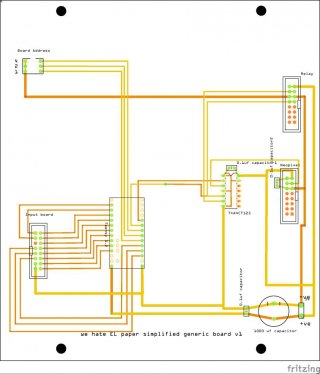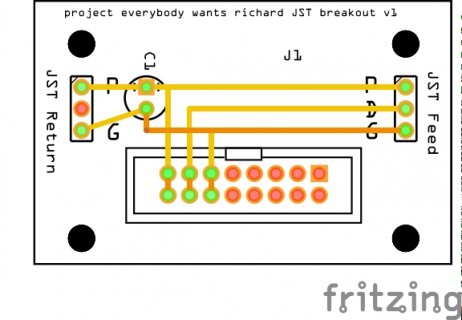Hello
We have a project with a 9x12 grid of 5mm through hole neopixels mounted on custom PCBs going through holes cut in EL paper, when the EL paper is off they are fine, however as soon as the paper turns on they flash in a crazy fashion.
I've attached our PCB designs showing the main PCB which houses the teensy and network adaptor (stacked), the breakout from ribbon to JST connector and the PCB strips (of which we have 8, they are wired with the + and -ve joined at either end, and data snaking through.
Does anyone have any ideas as to what we could do to avoid this interference?
NB, code wise we get the issue with a simple sketch such as
Thanks!
Richard



We have a project with a 9x12 grid of 5mm through hole neopixels mounted on custom PCBs going through holes cut in EL paper, when the EL paper is off they are fine, however as soon as the paper turns on they flash in a crazy fashion.
I've attached our PCB designs showing the main PCB which houses the teensy and network adaptor (stacked), the breakout from ribbon to JST connector and the PCB strips (of which we have 8, they are wired with the + and -ve joined at either end, and data snaking through.
Does anyone have any ideas as to what we could do to avoid this interference?
NB, code wise we get the issue with a simple sketch such as
Code:
#include <Adafruit_NeoPixel.h>
#define NEO_PIN 8
#define NUMPIXELS 108
Adafruit_NeoPixel pixels = Adafruit_NeoPixel(NUMPIXELS, NEO_PIN, NEO_GRB + NEO_KHZ800);
void setup()
{
pixels.begin();
}
bool on=false;
void loop()
{
for (int i=0; i<NUMPIXELS; i++)
{
pixels.setPixelColor(i, (on?0 : 100), 0, 0);
}
pixels.show();
on = !on;
delay(500);
}Thanks!
Richard




